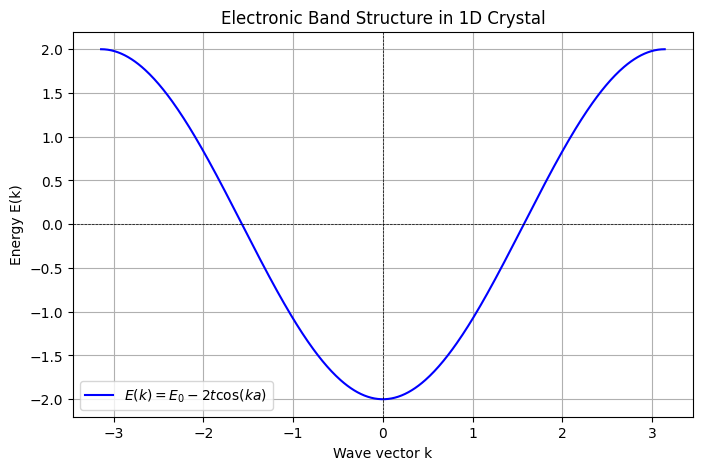Example Problem
In solid-state physics, one of the fundamental concepts is the electronic band structure.
A simple way to model this is using the tight-binding approximation for a 1D crystal with a single atomic orbital per site.
The energy dispersion relation for a one-dimensional crystal with lattice constant a and hopping energy t is given by:
E(k)=E0−2tcos(ka)
- E(k) is the energy of the electron,
- E0 is the on-site energy,
- t is the hopping integral,
- k is the wave vector, and
- a is the lattice constant.
This function represents a simple tight-binding model for a one-dimensional solid.
Python Implementation
Let’s compute and visualize the electronic band structure using Python.
1 | import numpy as np |
Explanation
- We define the lattice constant (a), on-site energy (E0), and hopping integral (t).
- We generate wave vectors k within the first Brillouin zone −π/a≤k≤π/a.
- We compute the energy dispersion using E(k)=E0−2tcos(ka).
- We plot E(k) as a function of k, showing the band structure of the 1D crystal.
Interpretation
- The energy band has a cosine shape, typical for tight-binding models.
- The bandwidth (difference between maximum and minimum E(k) ) is 4t.
- The band is symmetric around k=0 due to the periodic nature of the lattice.
This is a basic yet powerful model for understanding electronic band structures in solids.
